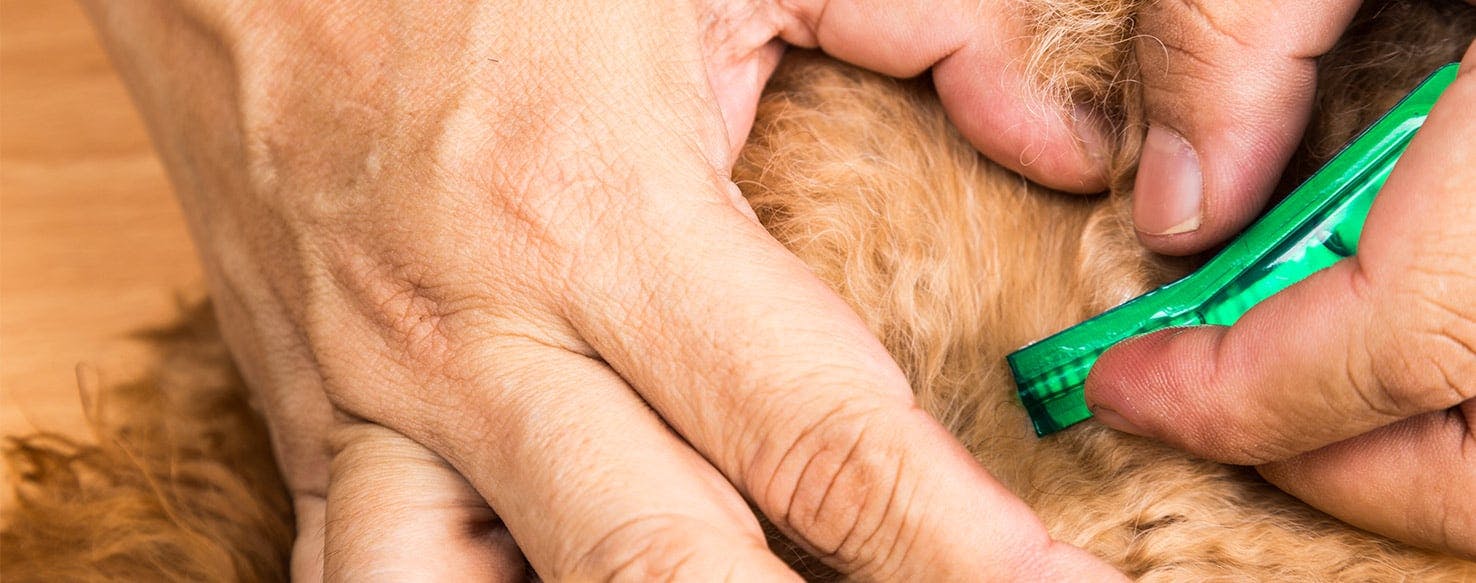
Save on pet insurance for your pet
You don't have to choose between your pet and your wallet when it comes to expensive vet visits. Prepare ahead of time for unexpected vet bills by finding the pawfect pet insurance.
If there's one thing guaranteed to make you itch, it's getting a letter from school saying there's been an outbreak of lice in your child's class. (Are you scratching yet?)
The human head louse, Pediculus humanus capitis, is a critter that we'd rather live without. It is spread by direct contact, head to head, and feeds off human blood. As they go about their business of feeding, pooping, and reproducing, they cause all manner of itchiness to their host, and it's this itch that usually alerts us to the problem.
But can the human head louse infect your fur-family, and indeed, could your dog be responsible for the outbreak in the first place?
Can Dogs Get Head Lice?
NO!
Phew! At least that's one less thing to worry about.
The clue is in the name: Pediculus humanus capitis. You see, the human head louse is species-specific (or fussy who it feeds on) and won't transfer between people and dogs, or vice versa.
However, dogs do get their own species of lice; these go by the names of Linognathus, Trichodectes, and Heterodoxus. So if it looks like a louse, itches like a louse, but happens to be on the dog, then know this isn't a head louse but a doggy-loving louse.
Does My Dog Have Lice?
Signs of lice infections in dogs include:
-
Hair loss secondary to scratching
-
A coat in poor condition, often soiled and matted
-
Anemia, in severe cases, due to blood loss
-
Fine gray speckles on the hair shafts (the louse itself)
-
Glistening white specks glued to the hairs (egg cases)
However, what we're describing here is a louse infection, rather than a head louse infection (which dogs don't get!).
Your vet can easily diagnosis a louse infection by combing your dog's fur and placing a slide of the resulting dander under the microscope. There, these ugly critters will be revealed.
For more detailed information check out: Lice in Dogs.
How Do I Treat My Dog's Head Lice?
Lice are easily treated by using a number of insecticidal products that are effective at killing lice. One of the most popular products is fipronil spray. Ask your veterinarian for a dosage-appropriate prescription for your dog.
It is essential to wash the dog's bedding and vacuum the house. Lice can survive off the host for up to a week. As well, the egg cycle of lice and nits can seem to be almost constant. Your vet can instruct you on how to properly disinfect your home to remove the lice. This is a necessary step; otherwise, it can be a perpetual cycle.
In addition, regular parasite control is a good idea. Plus, lice are more likely to be found on dogs that live in unhygienic conditions. Thus, if you have an outdoor dog, check the state of their kennel because it will need a thorough cleaning.
How Are Lice Similar in Dogs and Humans?
The symptoms of an infestation of lice are the same whatever the species. The removal of these pesky creatures is a process that must be followed in a consistent manner in both cases in order to eradicate them from the home.
How Are Lice Different in Dogs and Humans?
While the symptoms are the same, the implications are very different. Before you consider rehoming the dog, know that it's not possible for your pooch to be the cause of an outbreak of head lice that's now swept through the whole school.
The biggest difference is that dogs have their own species of lice, just as people do. So your kids won't infect the dog, and the dog won't infect the child. They can sit and scratch together, safe in the knowledge that each will stick with their own bugs.
Case Study
Miss X had purchased a puppy from a dubious breeder. The pup was in poor condition but she felt sorry for the youngster and bought it anyway. She took the puppy for a vet checkup. To her horror not only was the pup rife with lice, but he was anemic to boot.
The pup had been raised in unsanitary conditions and acquired a severe lice infection as a result. The vet sprayed the pup with fipronil and gave him a dewormer (as he was also likely to have worms, given the poor start in life). With the lice gone and no longer sucking blood, within a few weeks the pup had generated more red blood cells and went on to make a full recovery.
You may also like
